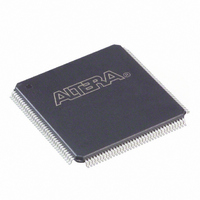EP1C3T144A8N Altera, EP1C3T144A8N Datasheet - Page 21

EP1C3T144A8N
Manufacturer Part Number
EP1C3T144A8N
Description
IC CYCLONE FPGA 2910 LE 144-TQFP
Manufacturer
Altera
Series
Cyclone®r
Datasheet
1.EP1C3T100A8N.pdf
(47 pages)
Specifications of EP1C3T144A8N
Number Of Logic Elements/cells
2910
Number Of Labs/clbs
291
Total Ram Bits
59904
Number Of I /o
104
Voltage - Supply
1.425 V ~ 1.575 V
Mounting Type
Surface Mount
Operating Temperature
0°C ~ 85°C
Package / Case
144-TQFP, 144-VQFP
Lead Free Status / RoHS Status
Lead free / RoHS Compliant
Number Of Gates
-
Available stocks
Company
Part Number
Manufacturer
Quantity
Price
Company:
Part Number:
EP1C3T144A8N
Manufacturer:
ALTERA
Quantity:
248
Part Number:
EP1C3T144A8N
Manufacturer:
ALTERA
Quantity:
20 000
Chapter 3: MAX II Devices
Power Analysis and Estimation
Power Analysis and Estimation
PowerPlay Early Power Estimator
PowerPlay Power Analyzer
© March 2010 Altera Corporation
1
Altera provides the following power analysis and estimation tools for your design:
■
■
The PowerPlay Early Power Estimator (EPE) is a power estimation tool that helps you
estimate the power consumption of your design during the system planning phase for
proper power supply planning and consideration. The EPE allows you to enter design
information based on architectural features and calculates the power consumed by
each architectural feature. Inputs to the EPE are environmental conditions and device
resources (such as clock frequency) that you expect to use in your design. The EPE
then calculates the static and dynamic power, current estimates, and thermal analysis
for the design.
You can either enter the design information manually into the spreadsheet or import a
power estimator file of a fully or partially completed design from the Quartus II
software. After importing a file, you can edit some of the input parameters including
V
your system requirements.
The value obtained from the EPE is only an estimation and should not be used as a
specification. The accuracy of the EPE results is dependent on how close your input of
the design information into the EPE resembles that of the final design.
The PowerPlay Power Analyzer tool in the Quartus II software is a power analysis
tool that helps you calculate your design power consumption accurately to ensure
thermal and power supply budgets are not violated after your design is complete. The
PowerPlay Power Analyzer tool requires your design to be synthesized and fitted to
the target device. Availability of information such as design resources, how the
design is placed and routed on the target device, and the I/O standards assigned to
each I/O cell allow the PowerPlay Power Analyzer tool to provide accurate power
estimation.
The process of using the PowerPlay Power Analyzer tool consists of three parts:
specifying sources of input data, specifying operating conditions, and running the
PowerPlay Power Analyzer tool.
The input data consists of the signal activities data (toggle rates and static
probabilities) of the compiled design. Signal activity data can be derived from
simulation results, user assignment in the Assignment Editor, user-defined default
toggle rate, and vectorless estimation.
The operating conditions include device power characteristic, ambient and junction
temperature, cooling solution, and board thermal model, all of which can be set in the
Quartus II software.
CCINT
“PowerPlay Early Power Estimator”
“PowerPlay Power Analyzer”
, ambient temperature, airflow, clock frequency, and toggle percentage to suit
The Automotive-Grade Device Handbook
3–3















